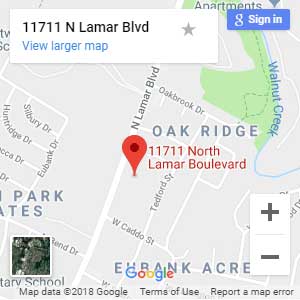Table of contents
According to a recent study by the Centers for Disease Control and Prevention (CDC), approximately 841,00 deaths were reported due to drug overdose between 1999 and 2019, with more than 70% of overdose deaths in 2019 involving an opioid drug. This includes commonly abused opioids such as prescription pain medication and heroin along with synthetic opioids like fentanyl. Overdoses involving opioids led to the deaths of nearly 50,000 people in 2019, and approximately 73% of those deaths involved the use of synthetic opioids [1].
Suboxone Use in Recovery
Suboxone is an FDA-approved prescription medication used in the treatment of opioid dependence and addiction which contains a combination of the drugs buprenorphine and naloxone. Suboxone was created to address and lessen the symptoms of the withdrawal process that occur when those with physical dependence or addiction to opioid drugs, including heroin, morphine, fentanyl, and oxycodone, stop taking them abruptly. Typically taken as a sublingual strip that dissolves under the tongue, Suboxone is considered to be a useful part of a treatment program for opiate addiction. Like methadone, Suboxone can reduce opiate withdrawal symptoms and also decrease the intensity and frequency of cravings.
Although Suboxone can be an effective drug that aids in recovery from opiate dependence, it is also a drug that is often taken for long periods of time after an addict has stopped using other opioids. Suboxone alone can also be misused and become addictive, and as a partial opioid agonist, it produces similar withdrawal effects to other opioids if it is quit “cold turkey” without medical assistance [2].
What is Buprenorphine?
Buprenorphine is classified as a partial opioid agonist, meaning that it works in the same manner as an opioid to a certain extent but with a weaker effect than full opioid agonists such as heroin, fentanyl, and methadone. It also has a “ceiling effect” so the opioid effects level off even with further dose increases, which is intended to reduce the risk of misuse, dependency, and severe side effects. Buprenorphine is used to lessen the effects of opioid withdrawal symptoms and cravings to use opioids without having the full opioid potency or effects themselves. This is intended to help people who take the medication abstain from using other opioids [3].
What is Naloxone?
Naloxone is a drug used in combination with buprenorphine in Suboxone due to its properties as an opioid antagonist or “blocker” which interferes with or reverses the ability of the body’s opioid receptors to produce the pleasurable effects, or “high”, of opioid drugs.
Naloxone in the form of Suboxone is administered during medically-assisted treatment programs to patients undergoing detox from opioid drugs and who have been free of any opiates for a minimum of 7-10 days but may need additional treatment for withdrawal symptoms. It can not be used by those still currently using opiates, as doing so could cause severe acute withdrawal symptoms. Naloxone is also known as the active ingredient in Narcan, a medication used to counteract the effects of opioids during life-threatening overdose situations [4].
Related post: Suboxone vs. Subutex: What’s the Difference?
The Risk for Developing a Dependence on Suboxone
Continuous use of opioid drugs over the long term results in changes in pathways of the brain, and long-term users have a higher probability of developing a substance abuse disorder to similar drugs. For example, a heroin addict using Suboxone during heroin detox may more quickly develop a physical dependence on Suboxone than someone who was addicted to another, non-opioid class of drug and who then began using Suboxone. Although Suboxone was initially developed as a treatment option for opioid addiction, it is now known to be addictive as a standalone drug that in many cases may require professional medical help to detox from opioid use entirely [5].
Related post: How Is Suboxone Used for Heroin Detox?
Suboxone Withdrawal Symptoms
Tapering down the dosage of any opioid medication is essential in easing the symptoms of withdrawal; however, detoxing without the assistance of medical professionals is not generally recommended. Those who attempt the detox process on their own are more prone to relapse due to an inability to cope with cravings, lack of a dedicated treatment and aftercare plan, and both the psychological and physical problems that can co-occur alongside withdrawal symptoms. In addition, tolerance levels in some users may quickly diminish during the detox process and, in the case of a relapse, attempting to administer even small doses of opioids to cope with withdrawal may potentially lead to overdose or death.
Signs and symptoms of Suboxone withdrawal may vary widely depending on factors such as the tolerance one has to the drug that has been built up over repeated use and the amount of time that has elapsed since the drug was last used. Common symptoms of Suboxone withdrawal are similar to that of other opioid drugs, and may include:
- Anxiety
- Chills
- Muscles aches and pains
- Nausea or vomiting
- Mood swings
- Feelings of restlessness or anxiety
- Depression
- Runny nose
- Stomach cramps and diarrhea
- Sweating
- Tremors or twitching
- Red, watery eyes [6]
Help With Suboxone Detox Treatment is Possible
Because Suboxone withdrawal symptoms such as cravings or depression may linger for an extended amount of time, having an aftercare plan in place after detox is essential to maintaining long-term sobriety. This may include enrolling in residential drug rehab, intensive outpatient program (IOP), or sober living program. Continued care options like these will decrease a person’s risk for relapse and provide varying levels of sobriety support after completing detox treatment when Suboxone use has been tapered down to nothing.
Drug detox is just the very beginning of a long and rewarding journey into a life of sobriety. Detox alone is not a cure for addiction, and you may need to continue your treatment if you want to experience lasting results. Most people who enroll in treatment and remain actively involved in it for an extended period find that they are able to abstain from using drugs and function much better on a social, occupational, and psychological level.
Those who use Suboxone should do so only as prescribed by a medical provider, as misuse can lead to unintentional and sometimes severe consequences which may prove fatal. If you find yourself questioning your or a loved one’s Suboxone usage, are concerned about health issues it may be causing and would like to discuss a detox treatment plan, support is available. Please call Briarwood Detox today at (512) 262-4426 or contact us online.
References:
- CDC’s Response to the Opioid Overdose Epidemic | CDC
- Suboxone Withdrawal: Symptoms, Timeline & Detox (americanaddictioncenters.org)
- Mental Health Medications | NAMI: National Alliance on Mental Illness
- Naloxone | SAMHSA
- Is Suboxone Addictive? Symptoms of Suboxone Addiction (americanaddictioncenters.org
- Suboxone Withdrawal: Symptoms, Timeline, and Treatment (verywellmind.com)


